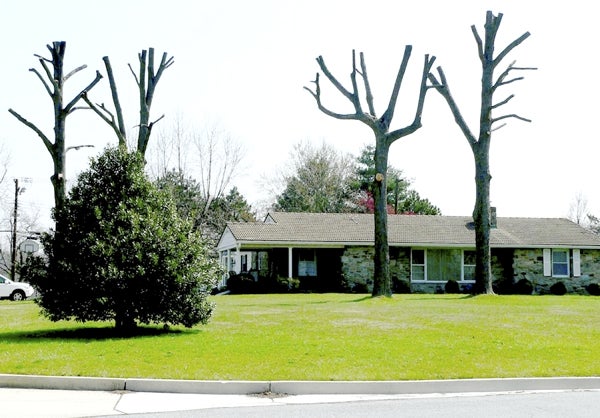Amy-Lynn Albertson: Living with trees
Published 12:00 am Friday, March 4, 2016

- Submitted photo Topping trees is not recommended. It can introduce insects and disease and often weakens trees so they cannot survive.
By Amy-Lynn Albertson
Rowan County Extension Director
Trees give us more than shade in the summer time. A healthy tree increases in value with age, increasing property values, beautifying our surroundings, purifying our air and saving energy by providing cooling shade and protection from winter winds.
Studies have shown that hospital patients have recovered more quickly in rooms that offered a view of trees. Because of their potential for long life, trees are often planted as living memorials. Sometimes we become personally attached to trees that we or those we love have planted.
Providing a preventative care program for your landscape trees is like putting money in the bank. Preventing a problem is much less costly and time-consuming than curing one once it has developed. Mature large trees like willow oaks and white oaks should not need annual pruning except to remove dead and dying limbs.
Many people think a tree needs to be topped. This is a terrible practice for many reasons. Topping puts a tree into shock. By removing the crown of a tree, it can upset an older tree’s well developed crown to root ratio and temporarily cuts off its food making ability.
Some people believe that topping their trees will control its height and spread. Actually it has the opposite effect. The sprouts are far more numerous than normal new growth and they grow so fast the tree returns to its original height in a very short time and with a denser crown. Tree topping makes the tree more susceptible to disease and insect problems. The stubs left from topping are highly vulnerable to insect invasion and the spores of decay fungi. If decay is already present in the limb, opening the limb will speed up the spread of the disease. The older and larger a tree becomes, the less energy it has in reserve to close wounds and defend against decay and insect attack.
Pruning trees can be dangerous. If the pruning required involves working above the ground or using power equipment, it is best to hire a certified arborist. A certified arborist has been certified through the International Society of Arboriculture. To become certified, the arborist must complete appropriate training and pass a standardized application and test.
A good arborist will offer a wide range of services (pruning, fertilizing, cabling/bracing, lightning protection, pest control, etc.). You can find a certified arborist in your area by searching on www.treesaregood.com a website supported by the International Society of Aboriculture. Considering that many tree species can live as long as 200 to 300 years, including these practices when caring for your home landscape trees is an investment that will offer enjoyment and value for generations. For more information on trees or other horticultural topics call 704-216-8970 or visit http://rowan.ces.ncsu.edu




